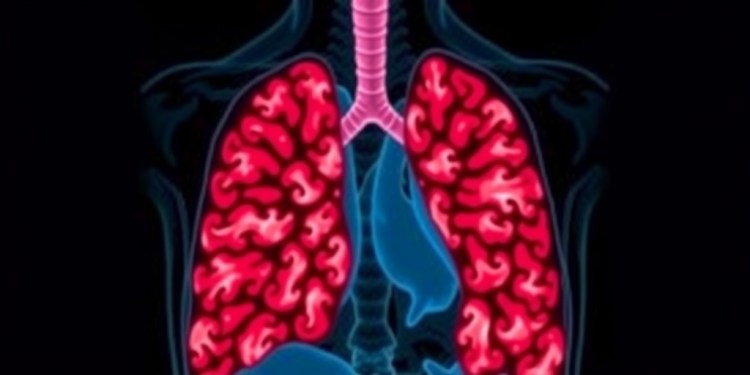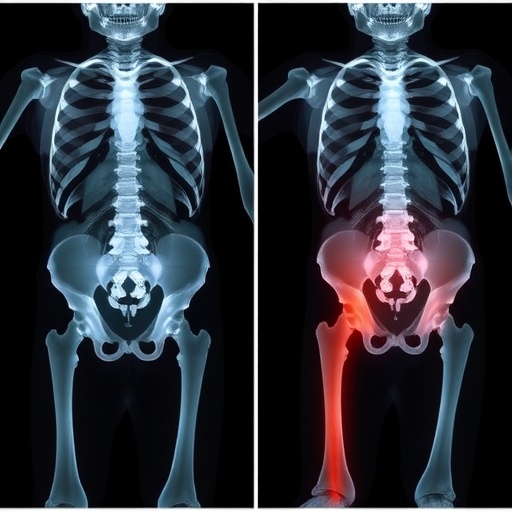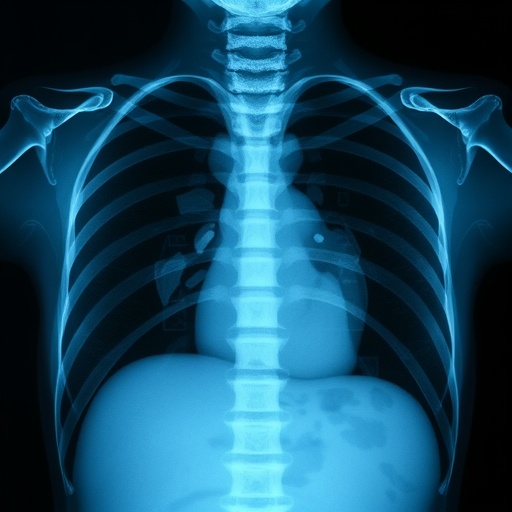
Pulmonary mucosa-associated lymphoid tissue (MALT) lymphoma stands as a rare and indolent variant of non-Hodgkin lymphoma, capturing the attention of the medical community due to its unique clinical and radiological characteristics. Given its nature, the presentation of pulmonary MALT lymphoma can often be misleading, leading to potential misdiagnoses. Patients commonly report nonspecific symptoms, including persistent cough and dyspnea, which are reminiscent of other respiratory conditions. This similarity becomes a challenge for clinicians as they strive to identify the underlying cause of these symptoms. Notably, this indolent lymphoma has been discovered to exhibit a unique set of features detectable through high-resolution computed tomography (HRCT) imaging, making it a crucial tool for differentiation and diagnosis.
Recent studies have highlighted the significance of HRCT in recognizing specific lung patterns associated with pulmonary MALT lymphoma. Particularly, characteristics such as nodular formations, consolidation patterns, and ground-glass opacities can offer essential clues. These imaging features aid healthcare providers in distinguishing pulmonary MALT lymphoma from other lung pathologies, which is critical for ensuring prompt and appropriate treatment. The capacity of HRCT to reveal the presence of lesions provides invaluable insights that contribute to a comprehensive understanding of the patient’s condition and potential disease progression.
The methodology adopted in the exploration of pulmonary MALT lymphoma involved a retrospective analysis of 20 confirmed cases from a specialized thoracic hospital. This clinical study meticulously documented HRCT characteristics and correlated them with pathological findings. Parameters analyzed included tumor size, location, and extent of bronchial changes, as well as peritumoral pulmonary interstitial infiltration. On the pathological front, cell type, morphology, and immunohistochemical profiles were also considered, allowing for a robust examination of the disease.
The results from this study revealed striking insights into the imaging characteristics of pulmonary MALT lymphoma. A significant finding was the prevalence of air bronchograms, observed in 100% of cases, alongside bronchiectasis noted in 85% of patients. Tumors were predominantly located in the left upper lobe, emphasizing a potential anatomical predilection. Such findings underscore the importance of specific HRCT features as diagnostic markers, reinforcing the concept that radiological investigation plays a pivotal role in early detection.
In terms of pathology, the tumors predominantly showcased monocytoid and centrocyte-like cells with minimal atypical features. The expression of B-cell markers such as CD20 and CD3 further illuminated the immunological profile of these neoplasms. Pathological insight not only aids in the characterization of the tumors but also offers guidance in determining appropriate therapeutic approaches. Interestingly, surgical resection was noted as the primary treatment modality in 60% of cases analyzed, while the remaining patients received chemotherapy. This highlights a balance in treatment strategies tailored to individual patient circumstances and disease characteristics.
The implications of the findings from this research extend beyond immediate clinical applications. The identification of HRCT features such as air bronchogram and bronchiectasis could significantly streamline the diagnostic process, offering tools that assist in differentiating pulmonary MALT lymphoma from similar respiratory conditions. The potential to implement these findings into routine clinical practice may enhance early diagnosis, thereby improving patient outcomes through timely intervention and treatment.
Understanding the importance of these imaging features holds promise for future research endeavors. To validate the observed characteristics and their diagnostic utility, further investigations across larger patient populations are warranted. Such research initiatives could also explore additional imaging modalities or biomarkers that may refine diagnostic accuracy, facilitating early recognition of pulmonary MALT lymphoma.
As the medical community continues to navigate the complexities associated with pulmonary MALT lymphoma, the accumulation of knowledge gained from studies like this serves as a beacon for ongoing efforts to improve the understanding and management of this rare disease. As practitioners enhance their skills in interpreting imaging findings, the potential for improved patient care becomes increasingly attainable. The groundwork established by this research provides a framework for future explorations aimed at optimizing diagnostic and therapeutic strategies in the realm of pulmonary MALT lymphoma.
This study exemplifies the intersection of radiology and pathology in the diagnosis of an indolent lymphoma, emphasizing that collaboration across disciplines can lead to better patient outcomes. The existence of unique HRCT patterns can raise clinical suspicion and prompt further investigation, ultimately driving forward the standard of care for affected patients. Continuous efforts must be focused on elucidating the intricacies of these tumors, expanding upon the findings presented here to facilitate the development of targeted therapies and management protocols.
Pulmonary MALT lymphoma may be rare, but the insights gleaned from this study position HRCT imaging as a crucial component in the armamentarium against this elusive malignancy. As awareness grows about the clinical features and imaging characteristics, healthcare providers can adapt their diagnostic approaches accordingly. Enhanced training in recognizing these specific patterns may present opportunities for earlier intervention and better prognoses, benefitting patients who navigate the challenges posed by this indolent disease.
In conclusion, the study’s findings are significant in shaping our understanding of pulmonary MALT lymphoma, reinforcing the indispensable role of HRCT imaging in diagnosing this rare lymphoma. The multidimensional approach outlined here, combining imaging and pathology, serves as a model for future research endeavors in similar areas of oncology, ultimately striving for innovation that improves patient care in current and evolving landscapes.
Subject of Research: People
Article Title: Comprehensive analysis of imaging and pathological features in 20 cases of pulmonary mucosa-associated lymphoid tissue (MALT) lymphoma: a retrospective study
News Publication Date: 21-Feb-2025
Web References: N/A
References: N/A
Image Credits: N/A
Keywords: Pulmonary mucosa-associated lymphoid tissue lymphoma, high-resolution computed tomography imaging, pathology, immunohistochemistry, non-Hodgkin lymphoma
Tags: clinical presentation of MALT lymphomaconsolidation patterns in lung diseasesdiagnostic challenges in pulmonary lymphomadifferentiating lung pathologiesground-glass opacities in lung imagingHRCT imaging in lymphoma diagnosisindolent lymphomas in clinical practicenodular formations in HRCTnon-Hodgkin lymphoma variantsPulmonary MALT lymphoma characteristicsrespiratory symptoms in lung cancerretrospective study on MALT lymphoma





